Posts Tagged ‘“Pedestrian accidents”’
Pedestrian Deaths in Boston are Rising
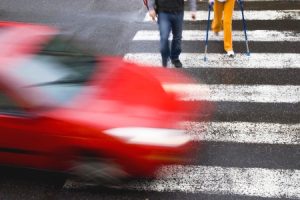 Pedestrian safety was the focus of several NBC Boston reports last night. One segment was called “Boston’s Crosswalk Crisis” and another was called “Cro$$walk Crisis: Private Funding for Public Ways.” They are worth viewing for anyone who lives or works in Boston. A few figures from the reports:
Pedestrian safety was the focus of several NBC Boston reports last night. One segment was called “Boston’s Crosswalk Crisis” and another was called “Cro$$walk Crisis: Private Funding for Public Ways.” They are worth viewing for anyone who lives or works in Boston. A few figures from the reports:
- Pedestrian deaths rose 15 percent in Boston in 2016.
- Nine pedestrians have died this year, up 30 percent from this time last year.
- In addition to these deaths, 384 pedestrians were hit and required medical attention during the first half of 2017.
The news station also reported that some Boston residents are taking charge and raising funds to build crosswalks. This is not cheap. In the South End, Tremont Street residents are trying to raise $25,000 for crosswalks at the intersection of Tremont and Union Park and Upton and Columbus and Rutland.
As pedestrian fatalities have risen, the City of Boston’s Vision Zero Task Force has been working to make the city safer for pedestrians and cyclists. The task force’s goal is similar to Vision Zero task forces in other major cities – to eliminate transportation deaths by 2030.
The rise in pedestrian deaths is discouraging, especially since the task force was recently successful in lowering default speed limits in Boston. Lower speeds mean fewer accidents because drivers have more time to respond.
The task force had to obtain Legislature approval to lower the city’s default speed limit from 30 mph to 25 mph. Now all cities in Massachusetts can opt-in and lower speed limits if they choose. A number of communities already have, including Cambridge, Somerville, Quincy and Milton.
Boston Pedestrian Accident Lawyers
At Breakstone, White & Gluck, our Boston pedestrian accident lawyers have over 30 years of representing those who have been injured and killed by negligence in Massachusetts. Our attorneys have represented numerous families who have lost loved ones in pedestrian accidents, even in the crosswalk where they should have been safe. In 2005, one of our clients was struck by an MBTA bus right in a crosswalk on Washington Street in the South End of Boston.
Drivers Have to Slow Down
Boston has some of the most congested roads in Massachusetts and many have been taken over by construction over the past few years. Drivers need to take even more care when traveling in the city and watch out for pedestrians and cyclists. Yet they often don’t and the roads tend to be more congested this time of year in Boston and Cambridge, as college students move in and elementary schools re-open.
Walk down any city street and chances are, you will see someone sitting in a car at a traffic light or stopped in traffic, ear to cell phone. In-vehicle devices which allow hands-free talking or map out directions are not always safer, either. When it comes to intersections or at parking garages, shopping plazas or schools, drivers need to give the road their full attention – and slow down.
Contact Breakstone, White & Gluck for a Free Legal Consultation
If you or a loved one has been injured in a Boston pedestrian accident, you may have the right to seek compensation from the responsible driver. Contact us for a free legal consultation at 800-379-1244 or 617-723-7676 or use our contact form.
You can also read about Breakstone, White & Gluck’s recent settlements and awards for clients in pedestrian cases.
Steps to a Safe Summer Driving Season
 As we approach summer, the message for Massachusetts drivers is to please slow down. Last month, in a matter of days, several car accidents seriously injured or killed pedestrians, some in crosswalks.
As we approach summer, the message for Massachusetts drivers is to please slow down. Last month, in a matter of days, several car accidents seriously injured or killed pedestrians, some in crosswalks.
On May 19, just after 7 a.m., an Acton 8th grader was struck by a van in a crosswalk at the intersection of Main Street and Hayward Road. She suffered serious injuries, leaving the scene by medical helicopter.
On May 22, a minivan crashed into two elderly women in Sandwich. The women, ages 70 and 88, went into cardiac arrest and later died at Cape Cod Hospital. At the time of impact, the women were in the crosswalk at the intersection of Route 6A and Merchants Road.
A few days later, a Watertown man was the victim, struck by a Toyota SUV at the intersection of Watertown Street and Aldrich Road. Then in Boston, the Memorial Day weekend ended with a fatal pedestrian accident on Tremont Street in the South End.
As we start summer, more people will be outside walking and everyone wants to stay safe. With a little planning, we can all drive safely this summer.
Slow Down. Under state legislation passed last year, Massachusetts cities and towns have the authority to reduce default speed limits from 30 to 25 mph. Boston, Cambridge, Medford and Quincy are among those which have dropped speeds.
Take it slow. Lower speeds give you more time to respond and prevent injuries. If there is a car crash, the impact may be less. According to the Active Transportation Alliance, if a pedestrian is struck at 40 miles per hour, the pedestrian has an 80 percent chance of dying. Reduce the speed to 20 miles per hour and there is a 10 percent chance of death.
No Distractions. Never use cell phones or electronic devices while driving. Give the road your full attention. If you are a parent, remind your teen about the dangers of distracted driving and the law. In Massachusetts, it is illegal for drivers under 18 to text or use cell phones and they could lose their driver’s license.
GPS Detours. Local police and communities are on to drivers who use GPS apps to find short-cuts. While it is perfectly acceptable to use these apps, remember that these detours typically lead to local roads. Unlike I-128 and I-93, you can expect pedestrians, cyclists, school buses and police officers who are monitoring traffic for speeding and violations. Read about stepped up patrols in the city of Quincy.
Crosswalks. Drivers should always stop for pedestrians in crosswalks and provide them with adequate time and space to safely cross the road. Drivers behind you are also required to stop.
Parking Lots. Always watch for pedestrians in parking lots. Last February, an employee at Trader Joe’s in Acton was hit by a SUV backing out of a space outside the grocery store. She died on the scene, just minutes after finishing her shift and preparing to head home for the day.
Summer Festivals. When possible, carpool or walk to concerts and summer festivals. Drivers can be impatient, increasing the likelihood of a crash.
No Driving and Driving. Don’t drink and drive. Driving and driving is against the law and you have zero ability to watch out for pedestrians if you under the influence.
Be Rested. Many drivers leave their Cape Cod or New Hampshire vacations early or late to avoid the commute. Make sure you are properly rested.
About Breakstone, White & Gluck
The Boston personal injury lawyers at Breakstone, White & Gluck have over 100 years combined experience representing those injured and killed in pedestrian accidents and car crashes in Boston, Cambridge and across Massachusetts. If you have been injured, learn your rights. For a free legal consultation, contact us at 800-379-1244 or 617-723-7676 or use our contact form.
Nine Pedestrian Accidents in One Day Highlights Need for Vision Zero, Other Safety Efforts in Boston
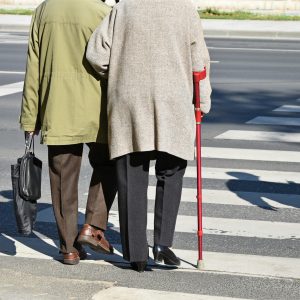 The Boston Herald has renewed concerns about pedestrian safety with a report that nine pedestrians were hit in Boston on the same day.
The Boston Herald has renewed concerns about pedestrian safety with a report that nine pedestrians were hit in Boston on the same day.
On Tuesday, January 17th, the city saw its worst day for pedestrian accidents since at least June 2015, according to a Herald analysis. The first pedestrian accident occurred at a McDonald’s restaurant on Massachusetts Avenue in the South End. This accident occurred shortly after 9:30 a.m. The other eight accidents occurred between 4:30 p.m. and about 9 p.m., in Dorchester, Jamaica Plain, Roxbury, Brighton and Hyde Park.
Pedestrian Accidents: The Numbers
Pedestrian accidents are a concern for everyone on the roads. In Massachusetts, we do a lot of walking. According to WalkBoston, more than 10 percent of all trips in Massachusetts are taken on foot (this is more than 40 percent greater than the national average).
When it comes to work, 12 percent of Massachusetts residents commute by walking. The number is higher in some communities. In Cambridge, 24 percent of residents walk to work.
According to the Boston Herald, pedestrian injuries are on the rise in Boston. In 2016, 904 pedestrians were injured in crashes, a 15 percent increase over 2015. Twelve pedestrians died in 2016, up from nine in 2015.
Mayor Marty Walsh has formed a Vision Zero task force with a goal of eliminating fatal and serious traffic fatalities in Boston by 2030. As part of the Vision Zero work, the city lowered its default speed limit from 30 mph to 25 mph in early January. The change does not impact state-owned roads. If you live or work in Boston, learn more about Boston’s speed limit change.
Pedestrian Safety Tips
Use Sidewalks. The sidewalk is the safest place for pedestrians. If no sidewalks are available, walk on the left side, against traffic so that drivers have a chance to make eye contact with you.
At Night. Carry a flashlight and wear a reflective safety vest if you walk at night or in the early morning.
Use Crosswalks and Traffic Signals. Use crosswalks and press the Walk button when available. Drivers are required to stop for you under Massachusetts law. Other cars are not allowed to pass the stopped vehicle.
Pay Attention to Safety Alerts. Winter is a harsh time for pedestrians. Pay attention to safety alerts and travel warnings from the State of Massachusetts, the MBTA, public schools, communities and your employers.
Beware of Snowbanks and Snowplows. Tall snowbanks obstruct the view between drivers and pedestrians. Wear a neon safety vest if you must walk in travel in these areas and pay attention to traffic. After a storm, expect to see snowplows on streets and working in parking lots. Take it slow.
Beware of Construction Areas. Areas such as North Station in Boston are now much harder for pedestrians to travel due to construction. Pay attention to notices about construction schedules and avoid building activity and construction workers whenever possible.
Watch for Cars Backing Up. Pedestrian accidents can happen when drivers neglect to check for pedestrians as they pull out of a parking space or a driveway. Watch out for these drivers and stop to let them back out.
From Breakstone, White & Gluck’s Experience
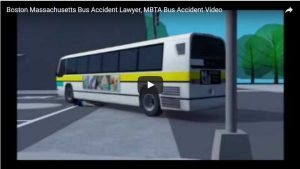 Our attorneys have over 100 years combined experience representing pedestrians who have been injured by the negligence of drivers and defective roadway conditions. Our law firm represented one pedestrian who was struck by a MBTA bus in a crosswalk in 2005. The pedestrian suffered serious injuries and required amputation of her right leg. The case went to trial and was appealed by the MBTA. The final award was $7.1 million for our client. See the re-enactment video we prepared for trial. It shows one way pedestrians can be put at serious risk.
Our attorneys have over 100 years combined experience representing pedestrians who have been injured by the negligence of drivers and defective roadway conditions. Our law firm represented one pedestrian who was struck by a MBTA bus in a crosswalk in 2005. The pedestrian suffered serious injuries and required amputation of her right leg. The case went to trial and was appealed by the MBTA. The final award was $7.1 million for our client. See the re-enactment video we prepared for trial. It shows one way pedestrians can be put at serious risk.
Study: Pedestrian Fatalities Are Rising in Massachusetts, Across U.S.
Walking, even in the crosswalk, is becoming more dangerous.
The Governors Highway Safety Association (GHSA) is projecting a 10 percent increase in pedestrian fatalities in traffic crashes across the U.S. last year. This marks the largest increase in four decades, since data was first collected.
The official tally shows an estimated 2,368 pedestrians were killed between January and June of 2015. Researchers expect annual figures to reach the 10 percent mark.
In Massachusetts, 34 pedestrians were killed during the first half of 2015, up 26 percent from 27 fatalities in 2014.
Already in 2016, there have been numerous pedestrian fatalities. WalkBoston, a non-profit advocacy group, recently reported 11 people were killed while walking in Massachusetts in January alone. The accidents were reported in South Hadley, Malden, South Yarmouth, Worcester, Roslindale, Dorchester, Reading, Framingham, South Boston, Quincy and other communities.
In at least four cases, pedestrians were tragically killed while walking in a crosswalk, where they should have special protection under Massachusetts law.
“The law is clear. Pedestrians have the right of way when crossing the street in a crosswalk or at an intersection with the “Walk” signal,” said Attorney Ronald E. Gluck, who has represented victims of pedestrian accidents in Boston for 35 years.
Gluck added, “Drivers who disobey this law can expect to face stiff consequences. They can expect to be charged criminally, especially if there is injury or death. But a police officer can charge any driver who violates the law, even if there is no injury. They can also expect to face consequences in a civil case brought by the injured pedestrian or the family of a pedestrian who was killed.
About Our Experience
Attorney Ronald E. Gluck recently negotiated a $1.25 million settlement for the family of a woman who was hit and killed in a crosswalk in Massachusetts. Read the case report here. To learn more about the law firm, visit our website.
.
Many Pedestrian Accidents in Massachusetts Since New Year
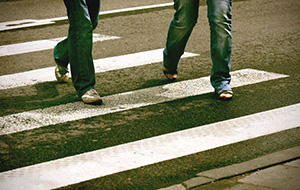 During the first two weeks of 2016, Massachusetts has already seen several serious pedestrian accidents.
During the first two weeks of 2016, Massachusetts has already seen several serious pedestrian accidents.
Last weekend, a 56-year-old security guard leaving work was killed in a hit-and-run accident on West Boylston Street in Worcester. Police have charged a 21-year-old man with motor vehicle homicide by negligent operation and other violations.
Last week, a 68-year-old pedestrian was killed in South Hadley, as he crossed the street in front of his home. In that case, the driver remained on the scene and police opened an investigation.
In Palmer, a 59-year-old pedestrian was killed while using a crosswalk at the intersection of North Main and Rockview streets. The pedestrian accident occurred about 5 p.m. in the day and the driver fled the scene.
Then in Cape Cod, a 19-year-old man was also killed when hit while crossing Route 28 in Yarmouth.
A few concerns for pedestrians in the winter:
Plow trucks. Last winter, at least two pedestrians in the Boston area were killed in parking lots by snow plow trucks. A 60-year-old employee at the Whole Foods store in Medford was struck and killed while walking across the store’s parking lot. A few days earlier, a Weymouth woman was hit and killed by a snow plow driver who was clearing the parking lot outside her condominium complex.
Parking lots. Pedestrians are just as vulnerable in parking lots as they are in streets. Last week, a pedestrian was hit in the South Street shopping plaza in Holyoke, in front of the Save-A-Lot supermarket.
Crosswalks. In Massachusetts, pedestrians who are crossing the street in a crosswalk or at an intersection with the “Walk” signal have the right of way. But drivers often fail to stop for pedestrians – and sometimes crossing guards. A crossing guard in Holyoke was struck by a car and injured at 8 a.m. one day last week.
About Our Experience
The Boston personal injury attorneys at Breakstone, White & Gluck have over 100 years combined experience representing individuals who have been injured in pedestrian accidents. Attorney Ronald E. Gluck recently negotiated a $1.25 million settlement for the family of a woman who was hit and killed in a crosswalk.
Legislation Proposed to Protect Massachusetts Pedestrians and Cyclists
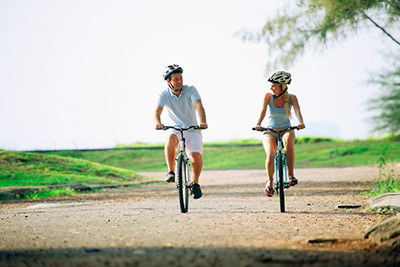 State lawmakers will be asked to consider a truck side guard law to protect pedestrians and cyclists.
State lawmakers will be asked to consider a truck side guard law to protect pedestrians and cyclists.
MassBike, the state’s leading bicycle advocacy organization, recently offered an update on proposed safety legislation for 2016. The Joint Committee on Transportation will hold a public hearing on the proposed legislation, including the truck side guard law, on Wednesday at the State House.
Truck Side Guard Bill H. 3019/S. 1810
Nearly half of all bicyclists and more than one-quarter of pedestrians killed in large truck crashes first impact the side of a truck, according to the Volpe National Transportation Systems Center. When a truck has high clearance, a cyclist or pedestrian can fall in the space between the front and rear wheels.
The center says sideguards are an effective way to prevent that impact and reduce fatalities and injuries. The United Kingdom has seen results: After implementing its law, cyclist fatalities dropped 61 percent while pedestrian fatalities fell 20 percent. The European Union, Japan, China and Brazil also have truck side guard laws.
In 2014, the City of Boston became the first city in the United States to adopt a truck side guard ordinance, requiring side guards, convex mirrors, cross-over mirrors and blind-spot awareness decals on all city-contracted vehicles over 10,000 pounds. Tractor-trailers have different weight requirements.
The cities of Somerville, Cambridge and Newton were discussing truck ordinances when Boston adopted its measure (and Cambridge did later enter into a partnership to install truck side guards on city-owned vehicles).
But a statewide law would eliminate the need for action by individual cities.
Bike Lane Bill H. 3072/S. 1808
This bill would make parking a vehicle or standing in a bike lane, or other on-road bike facility, a ticketable offense. The fine would be $100.
Vulnerable Users Bill H. 3073/S. 1807
Proposed by MassBike, this bill would require motorists to provide any “vulnerable user” three feet of clearance, even if it means crossing over the center line. Vulnerable road users would include cyclists, pedestrians and others who travel alongside cars. State lawmakers have considered this legislation in the past. According to the League of American Bicyclists, nine other states have vulnerable road user laws and 17 have laws which in some way address vulnerable road users.
About Breakstone, White & Gluck
The Boston personal injury attorneys of Breakstone, White & Gluck have over 100 years combined experience handling bicycle accident and pedestrian accident cases. If you have been injured, it is important to learn your rights. For a free legal consultation, contact us at 800-379-1244 or 617-723-7676 or use our contact form.
Halloween Safety: Trick-or-Treat Safety Tips
 Many of us are looking forward to the ghosts, goblins and treats of Halloween this weekend. But while a lot of fun, Halloween is also one of the most dangerous days of the year for pedestrians, particularly children. The National Highway Traffic Safety Administration (NHTSA) routinely reports that traffic accidents involving drunk drivers and pedestrians increase on Halloween.
Many of us are looking forward to the ghosts, goblins and treats of Halloween this weekend. But while a lot of fun, Halloween is also one of the most dangerous days of the year for pedestrians, particularly children. The National Highway Traffic Safety Administration (NHTSA) routinely reports that traffic accidents involving drunk drivers and pedestrians increase on Halloween.
For children, the risk of being hit by a car and killed more than doubles on Halloween, according to Safe Routes Worldwide.
We want you to have fun and to be safe on Halloween. Please read our safety tips before trick-or-treating:
1) Stay Visible to Cars. Buy neon reflective clothing for your child and yourself. This can be a vest, an arm band or reflective tape. Also carry flashlights, one per person.
2) Costume Check. Make sure your child can safely walk without tripping in their costume and see through any masks.
3) Stay With Your Child. Go trick-or-treating with your child and really pay attention as they walk from house to house. Tag along if they go with friends.
4) Remind Your Child To Stay Off The Street. You probably already tell your child this daily, but really impress this upon them again for Halloween and reward them for doing it.
5) Plan Your Halloween. Many trick-or-treaters travel between 4 p.m. and 9 p.m. This year, Halloween falls on a Saturday night, so activity may extend later and there may be more gatherings. Find out what will be happening in your community through social media or ask your local town office or neighbors. You want to know what to expect, whether you are trick-or-treating or going out to a party or weekend job.
6) Remember the Cyclists. Watch out for cyclists as you drive or take your children trick-or-treating. Pedestrians should stay on the sidewalk, even if it gets crowded, and save the side of the road for the cyclists.
7) Familiarize Yourself with the Halloween Route. If you are trick-or-treating in another neighborhood, take a drive through at night with your child beforehand, even if you are familiar with the area. Take note of where the roads are well-lit, the location of crosswalks, and how long the roads stretch.
8) Look for Crosswalks. Always cross the street at crosswalks, when available.
Reminder for Drivers. Try to get home early if you can, before the trick-or-treaters arrive or stay out until after they finish. Commit to travel slowly, put your cell phone away and do not drive under the influence of alcohol. If you plan to drink, find a designated driver or bring cab fare.
Read More
Safety for Pedestrians, Cyclists and Drivers
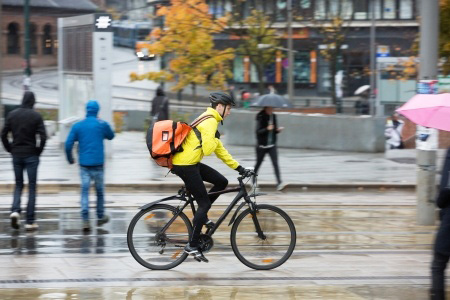 Safety for pedestrians and drivers was in the spotlight this winter, as Boston endured a record snow fall and everyone stood divided by the tallest of snowbanks. Now, as the snow starts to melt, cyclists are back out too and we want to take a moment to share a few safety reminders.
Safety for pedestrians and drivers was in the spotlight this winter, as Boston endured a record snow fall and everyone stood divided by the tallest of snowbanks. Now, as the snow starts to melt, cyclists are back out too and we want to take a moment to share a few safety reminders.
Safety was a priority this winter because Massachusetts saw many car accidents, even though state officials called multiple snow emergencies, and many schools closed, to keep the roads clear. We also saw at least two fatal pedestrian accidents. In Weymouth, a woman was hit and killed by a snow plow as she walked in the parking lot of her condominium complex. A 60-year-old employee at a Medford Whole Foods store also was killed, hit by a snow plow in the parking lot, leaving after his work shift.
Safety advocates made progress on protecting cyclists and pedestrians in 2014. This will serve as a strong foundation as we dig out from this harsh winter. In Boston, the city has implemented a truck safety ordinance, requiring that city-contracted trucks use sideguards and other protections aimed at protecting pedestrians and cyclists.
MassBike and other safety advocacy groups have also proposed new legislation which may get attention after this hard winter. If passed, the Bike Lane Protection Bill would make it illegal to block established bike lanes. The Vulnerable Road Users Bill would define pedestrians, cyclists, emergency personal and others as vulnerable road users and define a safe-passing distance for them.
Here are a few safety tips and facts to remember for pedestrians, cyclists and drivers:
Pedestrians
- Pedestrian accidents are too common. On average, in 2013, a pedestrian was killed every two hours and injured every eight minutes in traffic crashes, according to the National Highway Traffic Safety Administration (NHTSA).
- Walk on the sidewalks whenever possible. If a street only has sidewalks on one side, cross over.
- If you have to walk on the street, walk so you are facing oncoming motor vehicle traffic. Walk as close as you can to the curb to increase the space between you and traffic.
- Use crosswalks whenever they are available.
- Limit use of cell phones, iPods and music players.
- A common misperception is most pedestrian accidents happen at intersections. That is not true. Some 69 percent of pedestrian accidents occurred at non-intersections in 2013, according to the NHTSA.
- Some 10 percent of pedestrian accidents happened off the road, in areas such as parking lanes/zones, bicycle lanes, shoulders/roadsides, driveway access and similar areas.
- In the Spring of 2013, most pedestrian fatalities, 25 percent, occurred between 9 to 11:59 p.m., according to the NHTSA. Another 22 percent occurred between 6 to 8:59 p.m.
- If you walk at night, purchase a neon glow vest so you stand out to traffic. Even if you never wear it, it pays to be prepared.
Bicyclists
- Wear a bike helmet which meets the safety standard of the Consumer Product Safety Commission and properly fits.
- Cyclists follow different rules than pedestrians. Go with the flow of traffic, traveling in the same direction as cars, on the right side of the road. Up to two cyclists can ride in the middle of the traffic lane abreast if necessary to stay safe, but you should move back onto the side of the road single file when you can safely do so.
- State law prohibits biking on sidewalks in business districts. Not every city and town has a designated business district. But assume you are not allowed to ride on the sidewalk or ask the local police department for guidance.
- Cyclists must use hand signals to communicate to drivers, unless it would be unsafe to do so. You can view this video to learn the proper hand signals. Cyclists should also use a bell to let pedestrians know they are approaching.
- Watch out for dooring. This is when a car parks and the driver opens their door and hits you as you pass through. It is against the law, but it happens often.
- You are required to use a white headlight and red taillight or rear reflector if you ride anytime from a half hour after sunset until a half hour before sunrise.
- If you ride at night, consider purchasing a neon safety vest or clothing so you are more visible drivers..
- If you are involved in a bicycle accident, file a police report, even if you do not think you are seriously injured at first.
- Many drivers may not stop after cycling accidents. If you are hit and the driver does not stop, immediately contact police and file a police report.
Motor Vehicle Drivers
- Look for cyclists and pedestrians at every intersection and yield to them.
- Drivers must pass bicyclists at a safe distance. If you cannot, you must wait until it is safe to do so or change lanes.
- Obey all traffic laws and signals. Look for areas designated as school zones. Reduce your speed and take extra care on these roads.
- Do not park in bike lanes.
- Do not use your cell phone in the car. It is against the law in Massachusetts for drivers to text and drive, but the best practice is not to use it for telephone calls or other reasons either. It only takes a few seconds to cause a distracted driving car accident.
- A very dangerous practice is dooring. This is when a driver parks their car and opens the door without looking and hits an oncoming cyclist. It is against the law and violators can be fined. But drivers may also face a steeper penalty, a personal injury lawsuit, because cyclists can be seriously injured and the injuries can require months of recovery and hospital bills.
More Cycling Safety Resources
These are just a few rules of the road. To learn more, visit:
Shifting Gears: Bicyclists and Public Safety. Produced by MassBike, the Massachusetts Department of Public Health and the Boston Police Department.
Bike Safety in Massachusetts, Breakstone, White & Gluck.
What Every Massachusetts Bicyclist Needs to Know About Car Insurance, Breakstone, White & Gluck.
Brockton Pedestrian Accidents Surge, City Officials Unveil Safety Plan
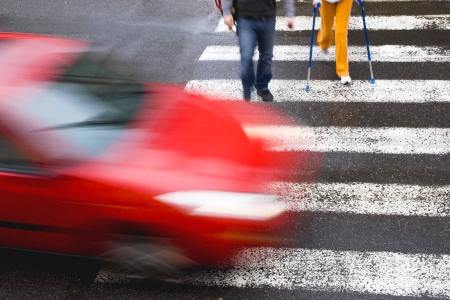 The mayor of Brockton has announced a plan to improve safety for those walking in the city. The city has seen an increase in pedestrian accidents, which have recently killed 8 pedestrians and injured 75 others. Seven of the eight pedestrian deaths have occurred since August 12.
The mayor of Brockton has announced a plan to improve safety for those walking in the city. The city has seen an increase in pedestrian accidents, which have recently killed 8 pedestrians and injured 75 others. Seven of the eight pedestrian deaths have occurred since August 12.
Two victims were children, and in one case, police are still searching for the hit-and-run driver. In 2013, the city saw one fatal pedestrian accident.
Mayor Bill Carpenter proposed the safety plan on Monday, which draws on resources from a number of state and local agencies, including the Massachusetts State Police, Brockton Police, the city’s Board of Health, the Massachusetts Department of Transportation, the Safe Routes Alliance and Brockton Area Transit.
His plan will focus on three areas: engineering, enforcement and education. Some of the measures still require approval from the city Finance Committee.
Educational Awareness Campaign. The city will launch a pedestrian safety awareness campaign to educate both drivers and pedestrians. One focus will be to reduce use of electronic devices and cell phones by everyone on the road. Public service announcements, video documentaries and other safety materials will be introduced to students in Brockton Public Schools.
Increased Walking Patrols. These will be expanded in high-traffic areas, to allow officers to provide pedestrians and cyclists with safety information when they put themselves in harm’s way.
Increased Traffic Patrols in High-Crash Areas. The Massachusetts State Police will work with Brockton to increase patrols in high traffic areas.
Scarecrow Patrol Cars. Brockton Police will deploy “scarecrow” cruisers at some dangerous intersections. These have no officers, but are meant to put drivers who do not know that on alert.
Clearing Sidewalks. The city’s Board of Health will conduct enforcement to make sure sidewalks are clear and can be safely used by pedestrians.
Traffic Signals. The city will consider adding pedestrian countdown features to the traffic signals on Belmont Street. At the same time, the Mass Department of Transportation is now conducting a review of traffic signals across the city.
Brockton is not the only community which has seen an increase in pedestrian accidents. Nationwide, fatal pedestrian accidents increased 6 percent from 2011 to 2012, according to the National Highway Traffic Safety Administration’s most recent figures. More than 33,000 were killed or about one every two hours.
Cyclist accidents are also on the rise, with a 16 percent increase from 2010 to 2012, according to the Governors Highway Safety Administration.
Read More
Pedestrians Being Fined in Some U.S. Cities
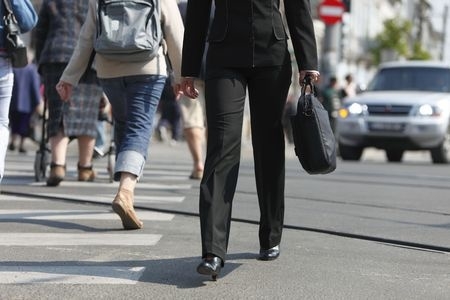 Pedestrians now have to watch out for more than just traffic in two major cities.
Pedestrians now have to watch out for more than just traffic in two major cities.
Jaywalking laws have traditionally gone unenforced in many cities, but New York City and Los Angeles are now telling pedestrians to follow the letter of the law or face citation. Pedestrians are surprised, and in some cases, are facing hefty fines for crossing the street before the traffic signal changes. One man in Los Angeles was ticketed $197 as he walked to work.
“I didn’t even know that was against the law,” he told the New York Times. “I was like, “You are the L.A.P.D., and this is what you are doing right now?”
New York City Police are taking the same steps. The city saw 12 pedestrian fatalities in January, prompting new Mayor Bill de Blasio to announce Vision Zero, a plan to eliminate traffic deaths within 10 years. Vision Zero focuses largely on drivers, but at the same time, New York City Police have started enforcing jaywalking laws.
Pedestrians have responded strongly against enforcement, both in Los Angeles and New York City. In Los Angeles, a lawyer who was ticketed as he walked to a local courthouse told the New York Times:
“Honestly, I cussed them out for about five minutes. I told them what a stupid waste of time this was, and wasn’t it great that they had two police officers standing there when there are obviously more important issues out there.”
In New York City, an 84-year-old man, Kang Wong, has filed notice he plans to sue the city and police department for $5 million. He alleges he was pushed against a wall and beaten as he was cited, sustaining head injuries and other trauma.
In New York City, three of the pedestrians were killed in the Upper West Side, near Broadway and 96th Street. They were a 9-year-old boy who was hit by a taxi as he crossed the street with his father, a young doctor struck by an ambulance outside her apartment building and a 73-year-old man hit by a tour bus.
After these deaths, the city installed electronic signs warning pedestrians to use the crosswalks. Police stood by with a bullhorn, citing pedestrians who violated jaywalking laws $40-$100.
Every city has an interest in this conversation, including here in Boston and Massachusetts. Our state sees an average of 86 pedestrian deaths each year, nearly one fifth of all traffic fatalities, according to WalkBoston, a non-profit advocacy organization which represents pedestrians and 75 cities and towns across the state.
But rather than ticket pedestrians, WalkBoston advocates for improving infrastructure and education. For instance, it notes that 90 percent of pedestrians killed are struck by cars traveling 40 mph compared to 5 percent who die by cars traveling at 20 mph. One way to encourage drivers to slow down is to reduce travel lane widths, the organization says.
Perhaps you are wondering what the fine for jaywalking is in Massachusetts. We hope you are sitting down: It is $1.00! But after three offenses, the fine doubles M.G.L. c. 90, § 18A. Municipalities won’t balance their budgets on jaywalking tickets, that’s for certain.
Related:
New York City takes aim at jaywalking, The Boston Globe.
Read More

